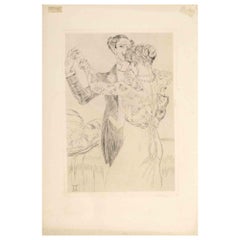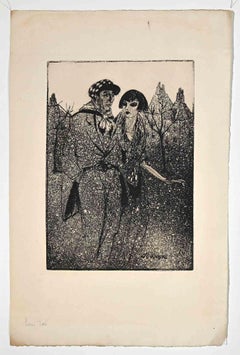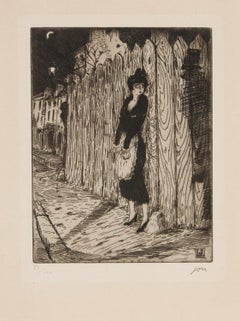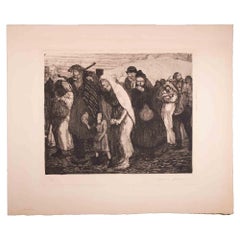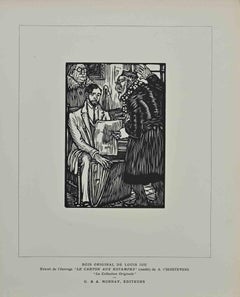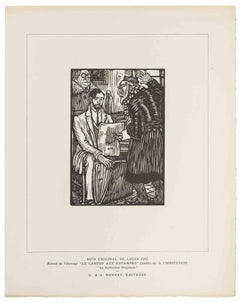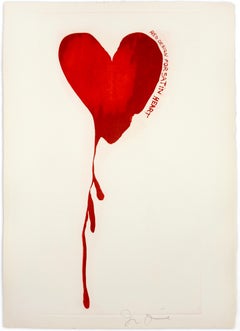Louis Jou Figurative Prints
Louis Jou (1882–1968) became a naturalized French citizen and was known as an artist of the French School. He set up his own publishing house in Paris and gained a reputation as one of the greatest typographers of the 19th century. His original etchings and wood engravings appeared in books authored by Victor Hugo, Andre Gide, Cervantes and many more. Jou’s etchings also appeared in the Gazette des Beaux Arts, published in Paris.
Beginning in 1859 until its final year in 1930, the Gazette des Beaux Arts became known for its role in the revival of etching as a creative process as vital as painting and sculpture. The Gazette regularly commissioned the greatest etchers of the time, including such artists as Whistler, Goya, Max Lieberman, John Sloan, Louis Jou and many more. Today these etchings are greatly sought after as collectibles.
1920s Modern Louis Jou Figurative Prints
Etching
1920s Modern Louis Jou Figurative Prints
Etching
20th Century Expressionist Louis Jou Figurative Prints
Etching
1920s Modern Louis Jou Figurative Prints
Etching
1920s Modern Louis Jou Figurative Prints
Woodcut
Early 20th Century Modern Louis Jou Figurative Prints
Woodcut
1920s Modern Louis Jou Figurative Prints
Etching
1960s Modern Louis Jou Figurative Prints
Paper, Woodcut
1960s Pop Art Louis Jou Figurative Prints
Etching
1970s Modern Louis Jou Figurative Prints
Etching
1950s American Modern Louis Jou Figurative Prints
Woodcut
1960s Modern Louis Jou Figurative Prints
Woodcut
Mid-20th Century Expressionist Louis Jou Figurative Prints
Aquatint
1960s Modern Louis Jou Figurative Prints
Etching, Aquatint
1930s American Modern Louis Jou Figurative Prints
Woodcut
1970s Modern Louis Jou Figurative Prints
Etching
Early 2000s Modern Louis Jou Figurative Prints
Etching
1970s Modern Louis Jou Figurative Prints
Etching
1960s American Modern Louis Jou Figurative Prints
Paper, Woodcut
